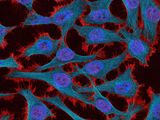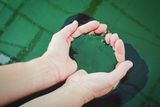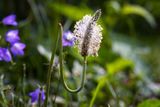Author: Rositsa Tashkova, Master of Molecular Biology and Microbiology
Again, we are on the topic of biting insects, as in the warmer months everything is teeming with life - desirable and not so much. While enjoying the bird song and the sea breeze, someone else probably enjoys our delicious blood.
Once the damage has been done and the bloodsucker has left the scene, you may be concerned about another thing - curiosity about who caused you the itchy rash and what measures are necessary to be taken.
In this article, you will see how the traces of bites of the most common insects look, and you will learn some of their peculiarities.
Mosquito Bite
There is no way, we will start with the most common bite - that of our old acquaintances mosquitoes. It is a little known fact that their proboscus is made up of several parts, including 6 "needles" and under the skin it becomes flexible to be directed to the nearest blood vessel and poke into it.
Therefore, if you catch the thief at the moment of his criminal act and stretch the skin around his proboscus with your fingers, he will not be able to get it out and the mosquito will fill literally until it bursts - of course, the damage to your skin will then be greater than usual and the itching - stronger.
Read how to protect yourself from bites with natural means and how to relieve itching in the article How to get rid of bloodsuckers and itching with natural means.

Most worrying of all, mosquitoes are rightly called "the deadliest animal in the world", as the contagious diseases they carry kill more people a year than any other animal.
Tick Bite
Unfortunately, most ticks in urban environments are carriers of Lyme disease, which can cause serious, sometimes deadly damage to our body.
The bite of a tick infected with Lyme disease often manifests itself in a characteristic way with a rash resembling a target - a red spot around the site of the bite, surrounded by a red circle.
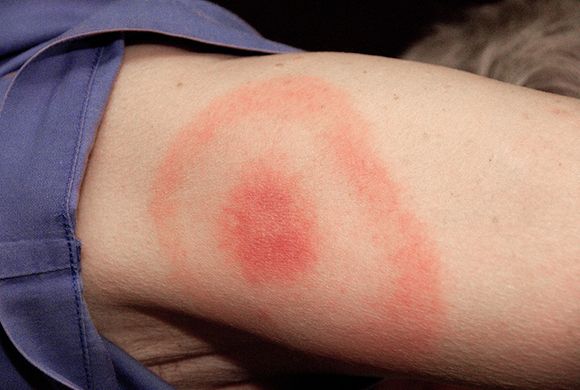
It is extremely important to prevent tick bites with appropriate repellents and clothing with long sleeves and legs tucked into the wrists and ankles. As well as taking steps to protect pets that can bring ticks home.
If we find a tick on ourselves, it is very important to remove it correctly - do not rotate, smear or burn the tick, but simply get it as close to the skin as possible with tweezers (possibly special for the purpose) and pull smoothly and straight up.
If the tick is rotated or oiled with oil and other substances, it begins to vomit in the wound, which will inevitably lead to an infection, if it carries diseases!
Bedbugs Bites
Bedbugs are one of the worst things that can happen to your home. They are extremely difficult to remove and often force entire families to simply leave the house. Unfortunately, they often carry in their luggage a bedbug that starts the agony from the beginning.
Bedbugs bite at night while we sleep, causing rashes composed of several consecutive bites. In allergic people, these rashes become intolerable, swell and may merge. It is important to seek medical attention if the bite appears to be further contaminated and infected.

The bites are on the exposed parts. After feeding, bedbugs retreat to their hiding places, and they are many, due to their small size.
Fortunately, bedbugs are not known to carry diseases.
A homemade trick found in the Balkans is to lay fresh bean leaves on the bed and around the supposed hiding places. There are small hooks on their surface on which bedbugs hang and can not continue to move towards their victim.
Flea Bites
Flea bites resemble fine pimples, 3-4 or more close to each other. Most often they are in the area of the feet and ankles, in the folds of knees and elbows, under the armpits, on the abdomen.
When the rash is pressed with a finger - it becomes white. It may become infected if scratched.

After feeding, fleas often leave small brown dots of blood on the sheets. They hide in cracks, where they can lay a huge number of eggs in a short time, and therefore it is necessary at the first suspicion of the presence of fleas at home, to take measures for its immediate removal.
It is easier to catch with wet fingers, jump skillfully and their body is hard, which makes it impossible to kill them with the soft part of the fingers - it takes two hard surfaces for the purpose.
Fleas are carriers of the plague, but these days cases are very rare. It is necessary that the flea first fed on infected wild rodents in order to carry the disease then on to the person.
Lice Bites
Lice bites are localized on the scalp, neck and even on the shoulders. They are small and itchy red dots.
Lice live in the hair, but they also stay in bed linen, which makes it possible to easily transfer them from it to our hair when sleeping in someone else's or a public bed (train, hut).
Itchy rash can easily be infected when scratching and lead to the need for the intervention of a doctor for its treatment.

Lice are difficult to remove, and unfortunately resistance to preparations against them is observed, and their spread among children is still a fact.
Lice have special claws, which they use to hold firmly for the human hair and fortunately at least they do not jump. Lice on man are a special species and can not live on animals. Different animals suffer from their own types of lice, specialized only for the particular host species.
Spider Bite
Fortunately, there are almost no biting spiders in Europe, especially if they are not provoked to do so. Spiders do not feed on human blood and bite only in self-defense.
If the spider crawls on your skin this does not lead to the appearance of a rash, so do not trust a person who tells you that something has crawled on you, and therefore you have a rash - the reason is certainly different.
The sensation of a spider bite most often resembles a wasp sting and is very painful. It leads to redness and edema, which can persist for very long time.

The bite of the European black widow (Latrodectus tredecimguttatus) feels like a prick, and after 1-2 minutes a blue-red spot and a pale halo appear at the site. Very soon dizziness, nausea and fatigue appear, and the bitten person needs immediate medical attention and antidote. The black venomous spider is found in two varieties - all black or black with characteristic red spots on the back.
Horse Flies Bites
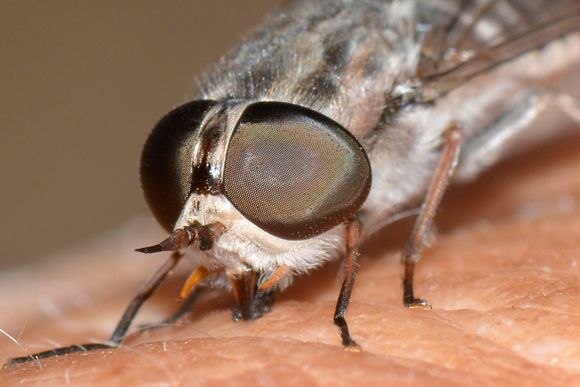
Unfortunately, the bites of horse flies are not torture only for horses. Their oral apparatus is suitable for piercing the thick skin of animals, and the bite is extremely painful. It is not surprising that the bite leads to blood flowing from the skin, pain, edema, irritation.
In order to avoid the bite of horse flies, and some other insects, it is good to wear clothes in light colors, not to use perfume and other sweet smells that attract them. If possible, when walking in nature, it is good to use repellent to repel bloodsuckers. Of course, each repellent has effect only on certain types of insects.






